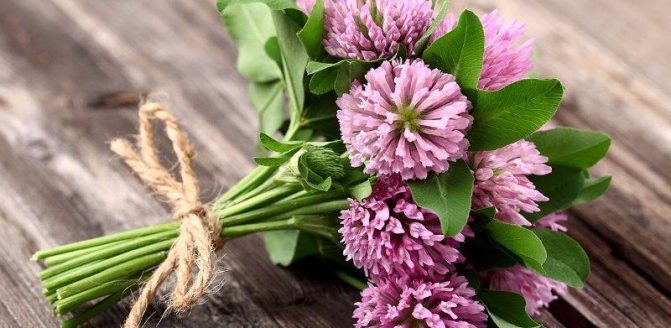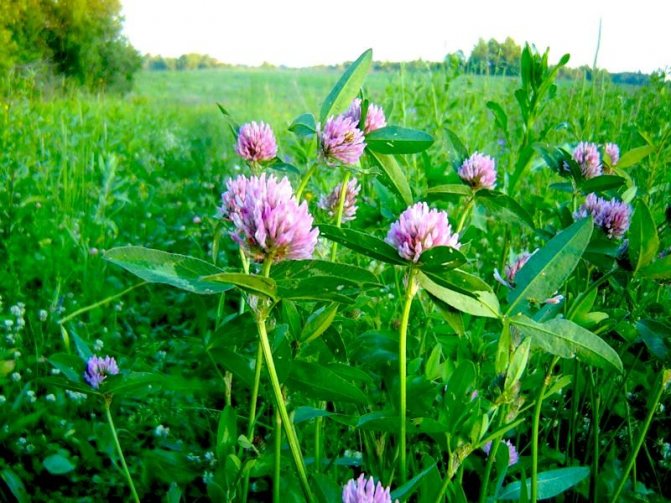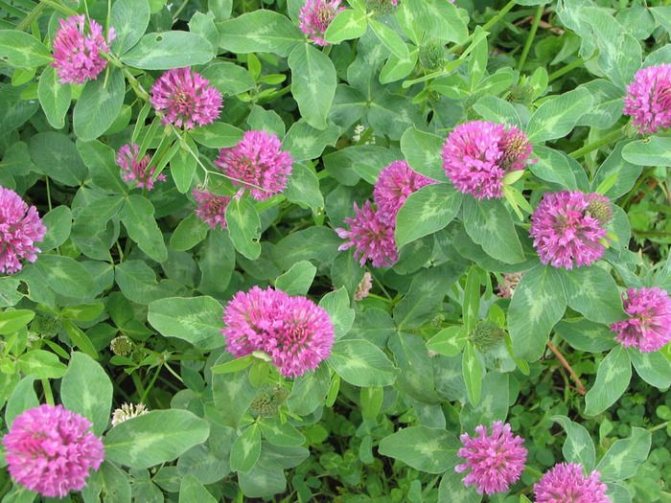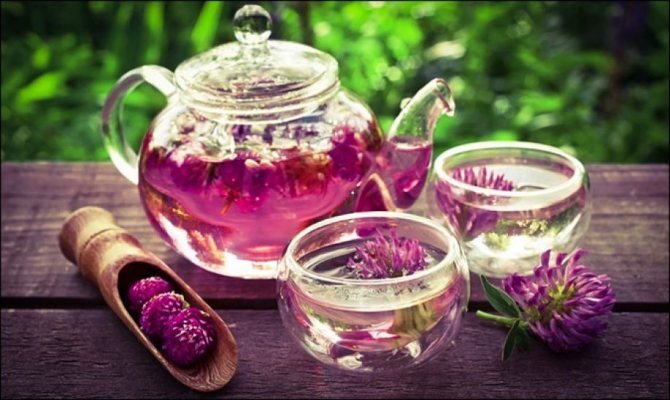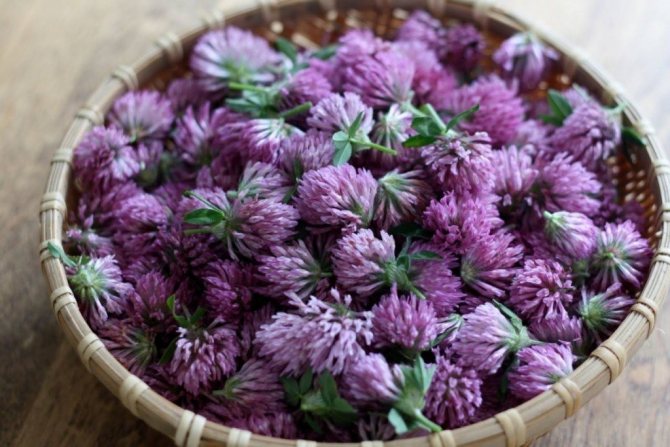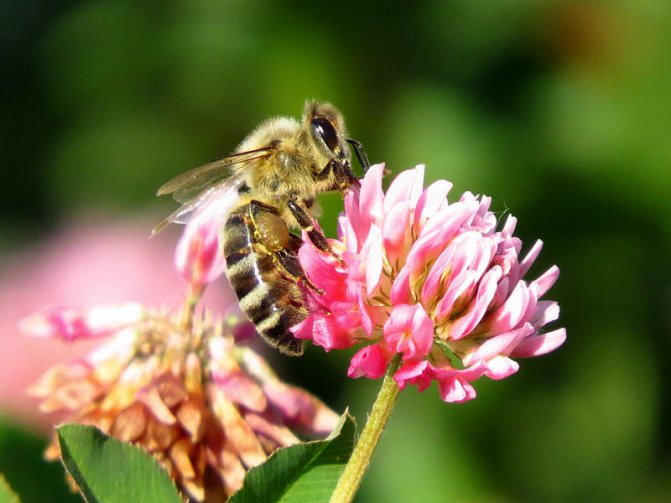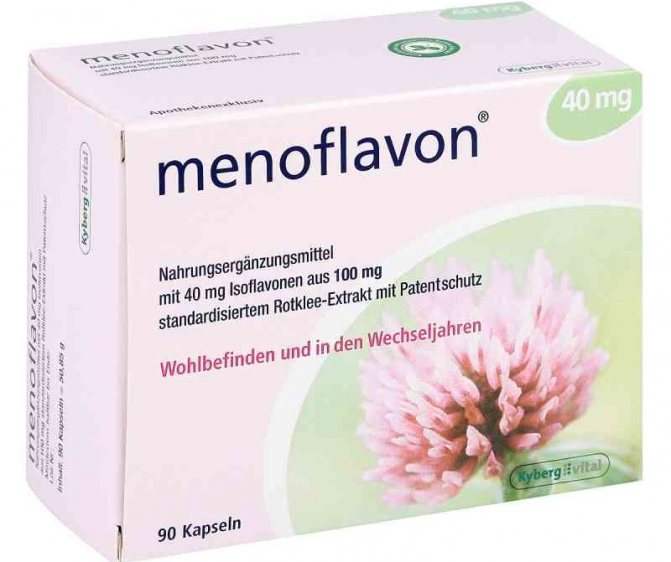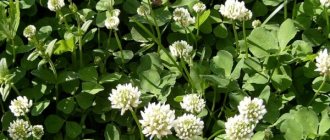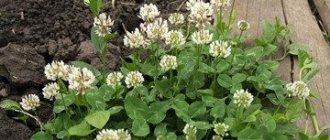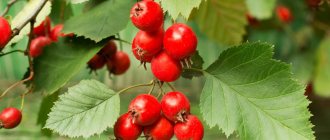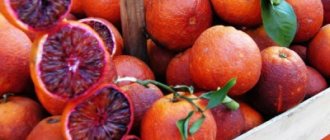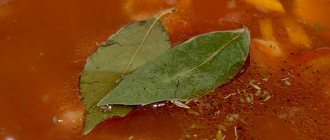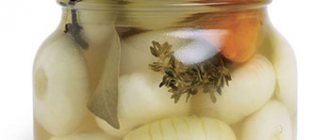Category: Garden Plants
Meadow clover (lat.Trifolium pratense), or red clover, or shamrock, or porridge, is a species of the genus Clover of the Legume family, which grows in Europe, Western and Central Asia, and North Africa. The generic name translates as "shamrock". Legend has it that the patron saint of Ireland, Saint Patrick, managed to expel the snakes from the country into the sea with the help of a clover leaf. Since then, there have been no snakes in Ireland, and the shamrock clover is the emblem of that country.
Planting and caring for clover
- Bloom: at the end of May or at the beginning of June for almost three months.
- Landing: sowing seeds in open ground - in early spring, as soon as the snow melts.
- Lighting: bright sunlight or partial shade.
- The soil: chernozem, loamy or sandy loam soils with a pH of 6.0-6.5.
- Watering: moderately, on average once a week, in the morning or evening. Watered more often in drought.
- Top dressing: only with liquid potassium-phosphorus fertilizers: the plant independently assimilates nitrogen from the soil.
- Reproduction: seed.
- Pests: nodule and clover weevils.
- Diseases: red clover attacks anthracnose, ascochitis, cancer and rust.
- Properties: is not only a fodder, but also a popular medicinal plant that has a diuretic, diaphoretic, choleretic, antiseptic, anti-inflammatory, expectorant, hemostatic and astringent effect.
Read more about growing clover below.
Red clover - description
Meadow clover is a biennial or perennial herb, reaching a height of 15 to 55 cm. Its stems are branched, ascending, the leaves are trifoliate, with finely toothed broad-ovate lobes. Leaflets are whole, ciliate at the edges. Loose spherical capitate inflorescences sit in pairs and are often covered with upper leaves, their corolla can be pink, white or variegated. The fruit of meadow clover is a single-seeded ovoid bean with yellowish-red or purple seeds.
Growing conditions
Red clover grows in light forests, nutrient-rich meadows and fields. Prefers fresh, fertile, deep clay and loamy soils, loves lime and sulfates.
Found in the mountains. In the central Alps, some local subspecies "climb" to an altitude of 2600 meters.
In free translation into Russian, Tribolium Pratense means "a shamrock growing in a meadow." The name comes from the Latin word tres or trias (three).
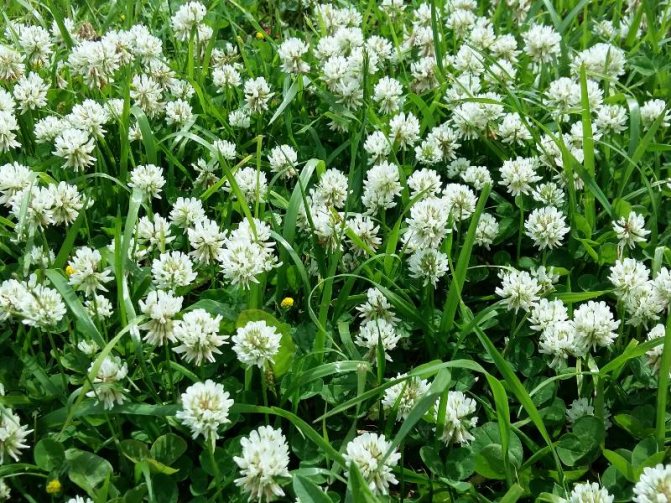
Clover loves fresh soil
Cultivation of meadow clover
Planting meadow clover
Clover is sown in early spring, immediately after the snow melts. It grows best in the sun or in partial shade on black soil, loamy and sandy loam soils, where cereals, potatoes, corn or root crops grew before it. And clover after clover can be sown only after five years. The hydrogen index on the site should be in the range of pH 6.0-6.5, so acidic soils will have to be limed.
Before sowing, the land on the site is dug to the depth of the shovel bayonet, cleaned of weeds and leveled, and a week later, a complex mineral fertilizer is scattered over the surface.Two weeks later, when the soil settles, it is loosened with a rake, moistened, after which, having chosen a calm day, they begin to sow. Pre-seasoned for an hour in water and dried two-year-old clover seeds are mixed with dry soil in a ratio of 1: 5 and evenly distributed over the plot in rows, after which they are sprinkled on top with a layer of soil. Large seeds are covered with a layer 4-5 cm thick, and small ones - 1-2 cm. The seeding rate is approximately 10 g of seeds per 1 m² of plot. Watering after sowing is carried out with a watering can with a shower head, so as not to wash the seeds from under a thin layer of soil. Clover seeds germinate in 5-10 days.
- Gaillardia: planting and care, growing from seeds
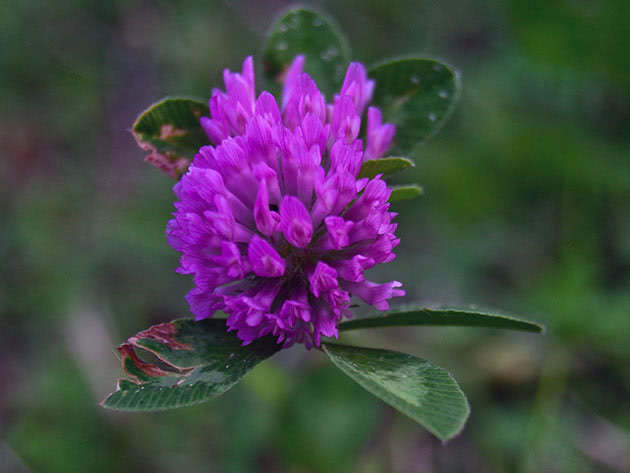

Caring for meadow clover
The most important point in the care of meadow clover is watering, since prolonged drought affects both the decorativeness of the lawn and the quality of medicinal raw materials. Too frequent and abundant moisture also has a bad effect on the condition of the plant, although white-headed clover is more resistant in this respect than pink. Water the clover in moderation, on average once a week, choosing for this in the early morning or evening hours.
Since meadow clover assimilates atmospheric nitrogen with the help of nodule bacteria, it only needs potassium-phosphorus fertilizers, which are applied in liquid form. If the clover grows in fertile soil, feeding is not needed at all.
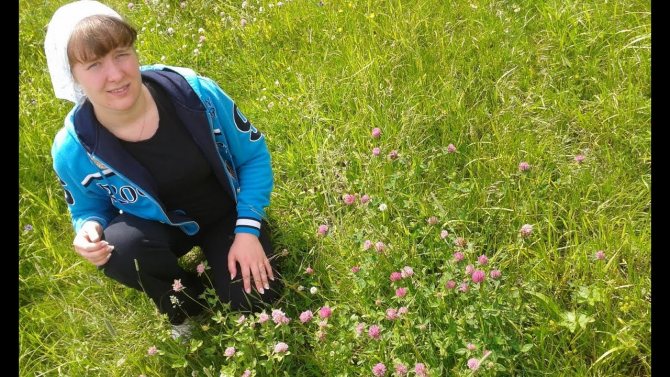

Amazed red meadow clover diseases such as anthracnose, ascochitis, cancer and rust. To avoid the destruction of clover by these infections, it is necessary to choose varieties resistant to diseases for growing, be sure to disinfect them before sowing and harvest or mow the crop at the very beginning of flowering. In addition, it is extremely important to observe crop rotation and, if clover crops are affected by cancer, do not grow a crop in this area for at least 7 years. Dusting the crops of meadow clover with sulfur powder is effective against diseases such as ascochitis and rust, and fungicides are used against anthracnose.
Nodule and clover weevils are the best known pests of meadow clover. Clover weevils damage the leaves, buds and flowers of clover: one insect larva can destroy up to 11 ovaries. To avoid a decrease in yield due to the harmful activity of clover weevils and their larvae, it is necessary to mow the crops during the budding period. In spring, nodule weevils damage the point of growth at the seedlings, and later their larvae eat out depressions in the roots and destroy clover nodules. Insecticides will have to be used against these pests.
Effective recipes for cholesterol and other diseases based on porridge
Meadow clover for cholesterol is a unique remedy that is famous all over the world. With proper preparation of the drug in a fairly short period of time, you can forget about the problem without using expensive medicines.
Clover tincture


Since ancient times, this culture has been used for cleaning blood vessels. One of the most popular remedies is clover infusion with vodka. For the preparation of such a drink, you can use both fresh and dry flowers of the culture.
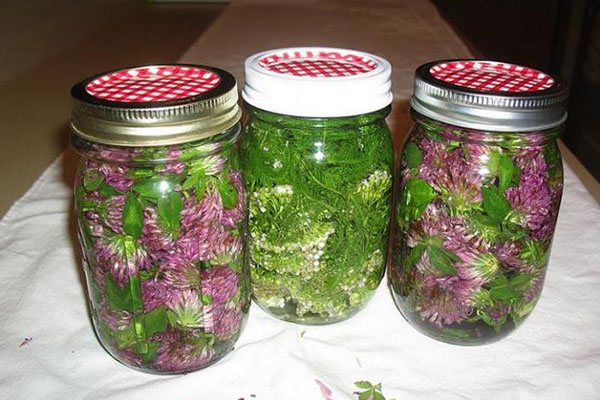

Required Ingredients:
Put clover flowers in a two-liter jar and fill them with liquid. The resulting mixture must be kept in a dark place for 2 weeks. At the end of the time, the liquid will need to be filtered and then refrigerated. Everyone can drink such an infusion, but adhering to certain dosages. First of all, this applies to elderly people. It is necessary to drink alcoholic tincture once a day before meals. The course of treatment is 30 days. Then you should take a break for 10 days and resume therapy again.
Clover tincture with alcohol has a tonic and calming effect.
It is useful to take this remedy in the spring season. It is at this time that the human body needs vitamins.
Sweet cholesterol medicine
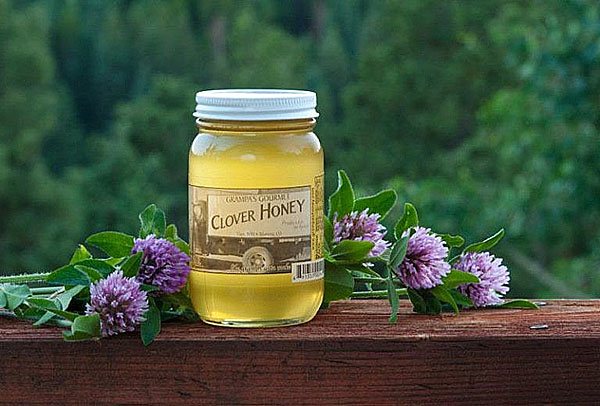

To prepare such a remedy, you need to purchase clover honey at the pharmacy. To do this, you need to take 30 g of a delicacy and 10 ml of fresh lemon juice. Mix the components thoroughly to obtain a homogeneous mass. Store the medicine in the refrigerator.
Clover honey can lower blood pressure.
Take the composition every day before lunch. The course of treatment is one month. Clover honey is a very beneficial remedy. It is a natural antioxidant that quickly lowers cholesterol levels and restores the health of the circulatory system.
Clover decoction
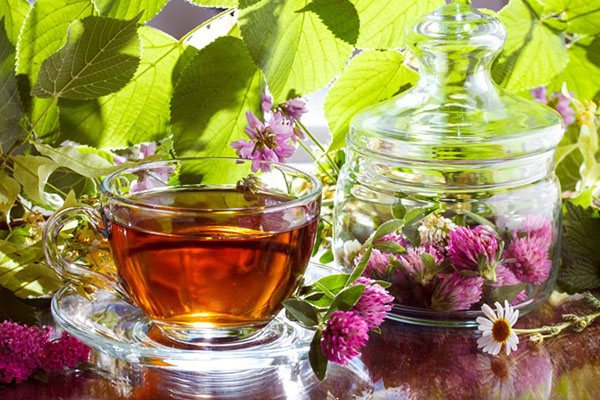

To prepare the remedy, you must use the flowers and leaves of young plants. This is one of the most popular recipes used all over the world.
Collecting meadow clover
Red clover is harvested for hay at the very beginning of flowering. If you are late with harvesting, the quality of the feed deteriorates, as the protein content of the plant decreases.
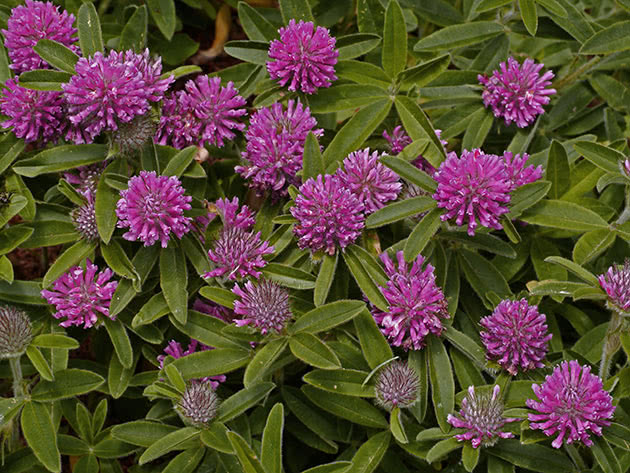

Only red clover flowers are used as medicinal raw materials, which are also removed at the beginning of flowering. After harvesting, the flowers are cut along the upper stem and dried in a shady place in the garden or in a semi-dark, well-ventilated room, where the temperature should not rise above 35 ºC. Store medicinal raw materials in paper bags or cardboard boxes in a dry, dark and cool place.
- Gaillardia: planting and care, growing from seeds
Types and varieties of meadow clover
In culture, there are two types of meadow clover: late-ripening single-cut and early-ripening double-cut. Early ripe clover is distinguished by its rapid development, an abundance of green mass, strong branching, dense foliage and the ability to form aftermath. And the late clover differs from the early one morphologically: it has longer stipules and a greater number of internodes - from 7 to 12. Late varieties give a good harvest in the first cut, but their ability to form aftermath is much lower than that of the early ones. However, the winter hardiness of late clover is higher than that of early maturing.
The most famous varieties of meadow clover are:
- Amber - medium early variety, resistant to cancer and root rot, providing 2-3 mows during the growing season;
- Perennial - early ripening, high-yielding winter-hardy hybrid variety, bred by crossing the varieties Slutskiy early ripe and Predkarpatskiy 33. During the growing season, this clover forms three cuttings;
- Resilient - an early ripe winter-hardy variety of the Belarusian selection, resistant to waterlogging and giving two mows per growing season;
- Ternopil 2 - a high-yielding early ripe and winter-hardy variety of Ukrainian selection, forming 2-3 mows per season;
- Maro - medium-early, resistant to cancer and root diseases, a variety of German selection;
- Renova - a drought-resistant, highly productive variety, giving two mows per season;
- Pratsavnik - a highly productive drought-resistant Belarusian variety, characterized by increased resistance to lodging and giving on average two mows per growing season.
In addition to those described, such varieties of red clover as Yaskrava, Dolina, Mereya, Vitebsk, Slutsky, Minsky, Demena, Tsudovny, Early-2, Trio, Veteran, Altyn, Amos, Green, Vityaz, Hephaestus and others are often grown in culture.
Properties of meadow clover - harm and benefit
Medicinal properties of meadow clover
Meadow clover is a popular medicinal plant, because it has a large amount of valuable substances. Why is meadow clover useful? Its leaves and inflorescences contain minerals and vitamins, salicylic acid, carotene, flavonoids, tannins, phytoestrogens, essential and fatty oils, fiber and other substances necessary for the human body.
Clover has long been used in folk and official medicine, it was used to produce medicines, syrups and potions, biologically active additives. Clover is included in the collection for the treatment of various diseases. At home, decoctions, infusions and tinctures are prepared from it, which, like fresh plant juice, are used for lotions, medicinal baths and rinses. Clover is added to powders, ointments, shampoos, lotions, cleansers and skin diseases.


Clover has a diuretic, diaphoretic, choleretic, antiseptic, anti-inflammatory, expectorant, hemostatic and astringent effect, therefore it is used to treat many ailments. For example, decoctions of clover are used to treat diseases of the kidneys, biliary tract, inflammation of the appendages and bladder, urolithiasis, headaches and dizziness, asthenia and anemia, pulmonary tuberculosis, rickets, poisoning, bleeding and hemorrhoids. Decoctions and infusions of clover inflorescences remove excess fluid from the body, and using them for rinsing, they treat gingivitis, sore throat, stomatitis.
Since clover has anti-sclerotic properties, it is used in the treatment of diseases of the cardiovascular system and atherosclerosis. Clover preparations help to strengthen the walls of blood vessels, improve the condition of the veins, lower blood cholesterol levels, arterial and intracranial pressure, and increase hemoglobin. Flavonoids contained in clover saturate tissues with oxygen, normalize metabolism, fat metabolism and protect the body from premature aging.
- Gaillardia: planting and care, growing from seeds
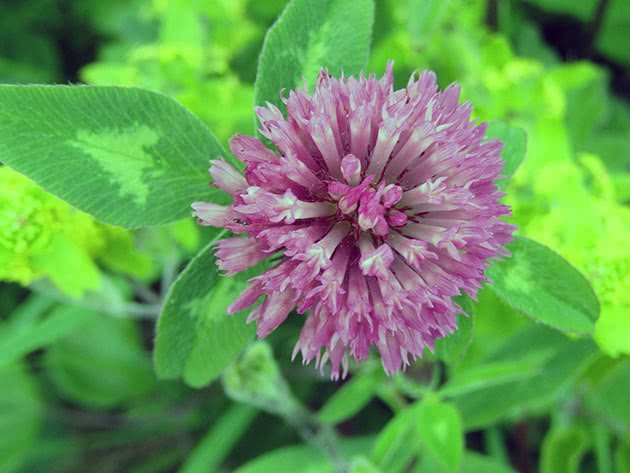

Red clover is effective in treating all types of cancerous tumors: it clears mucus and blood, and stops the growth of cancer cells.
Contraindications to the use of the plant
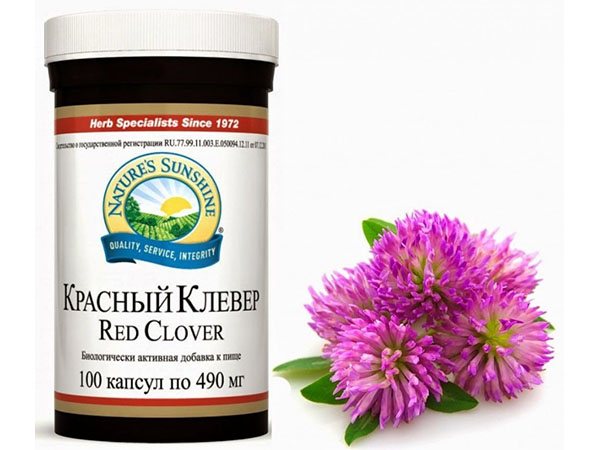

The healing properties of red clover have been known for many years. But, despite all the advantages, culture has its contraindications. For most people, the herb is not dangerous, especially if it is not used internally, but only as a lotion.
Clover is not recommended for use:
- Pregnant women and women who are breastfeeding. Stems and other parts of the culture act like estrogen. This can cause hormonal imbalance. This prohibition also applies to the external use of the compounds.
- Clover is contraindicated for people who have blood diseases. This is due to the fact that infusions, ointments can cause bleeding. Since the stable is a good blood thinner, it is not recommended to use it at least 2 weeks before the operation. The same amount of time must be waited after the procedure.
- Clover can be dangerous for patients with indigestion.
- You should not take medications based on this culture for heart patients and people who have suffered a stroke.
- It is forbidden to drink infusions of flowers and leaves with neoplasms. Such a liquid can lead to a deterioration in the condition.
- Clover can also harm people who have thrombophlebitis. The plant is capable of causing blood clots in the event of S.
For the preparation of infusions, it is recommended to use young stems, the height of which does not exceed 15 cm.
Potential side effects should be considered when taking clover-based medications. Patients often complain of a rash, muscle pain, nausea, and headaches. With individual intolerance, vaginal bleeding may occur in some women.If you use white or red clover for medicinal purposes, it should be remembered that it is not recommended to take it with certain groups of medicines.
Overuse of clover can lead to liver damage.
Do not use clover with:
- Estrogens in capsules or tablets.
- Birth control pills that contain levonorgestrel and ethinyl estradiol.
- Medicines for the treatment of the liver. Clover is able to slow down their breakdown in the body and hinder their action.
- Medicines that slow down blood clotting. These include Aspirin, Naproxen, Heparin, Diclofenac and others.
- Means that are prescribed in the treatment and prevention of cancer. Infusions can reduce the effectiveness of such formulations.
It is also not recommended to take drugs that contain this substance for people with diabetes and children.

